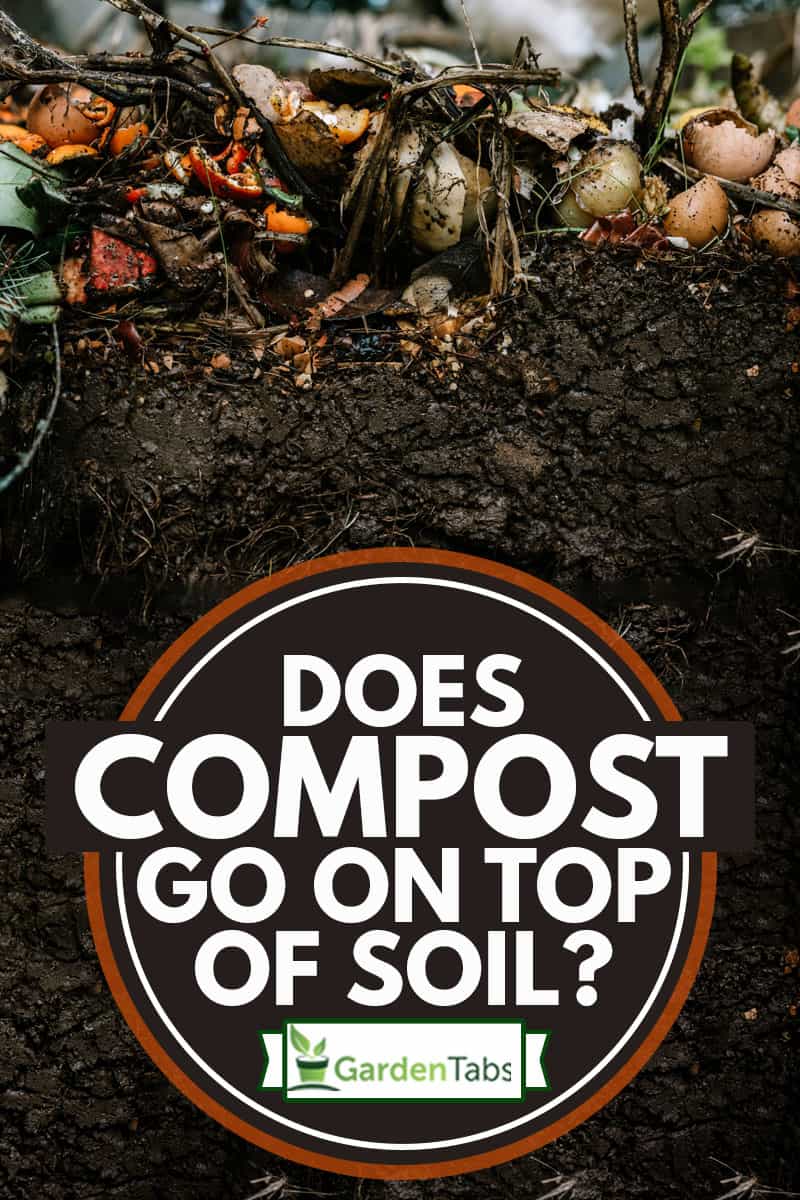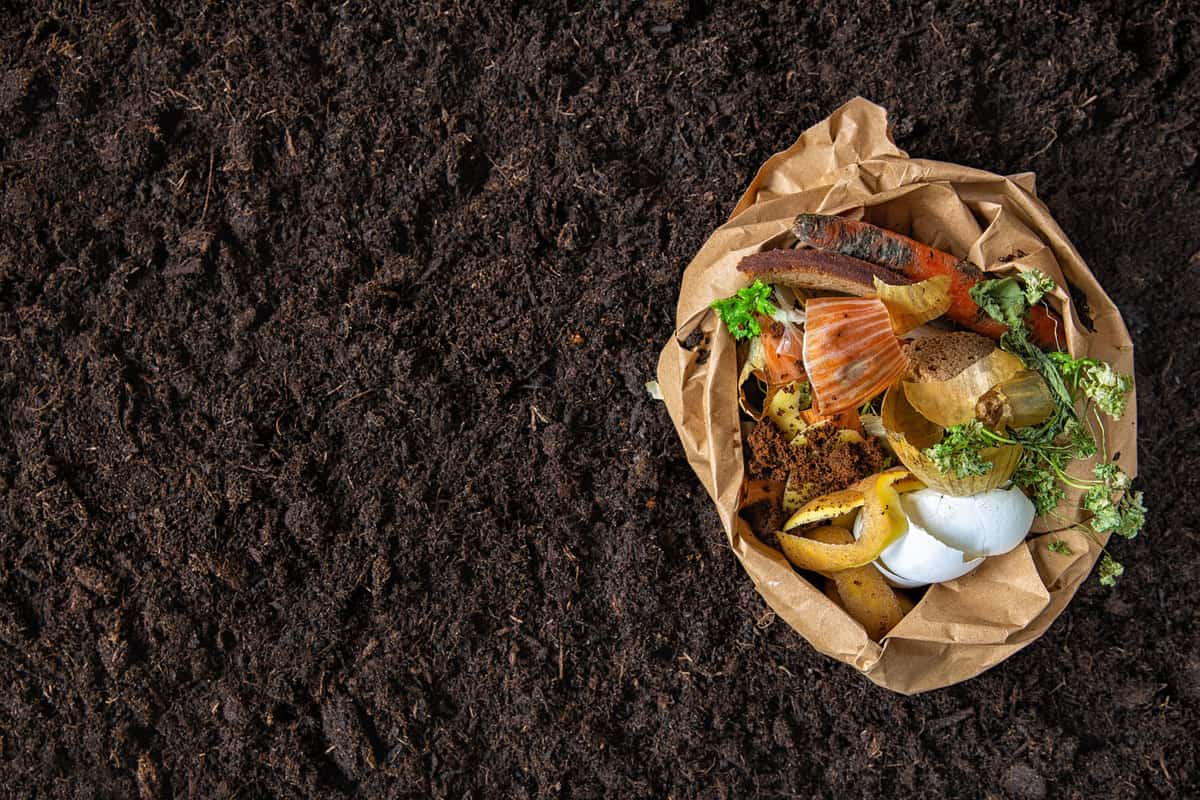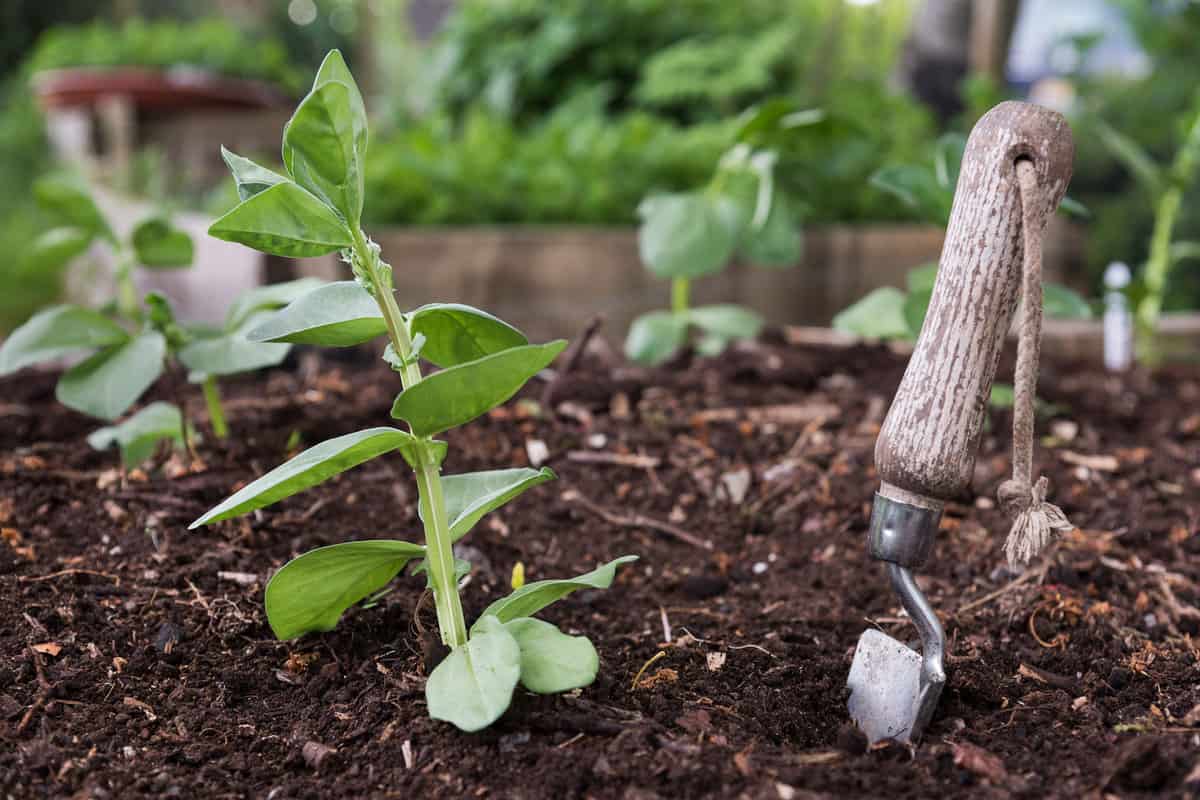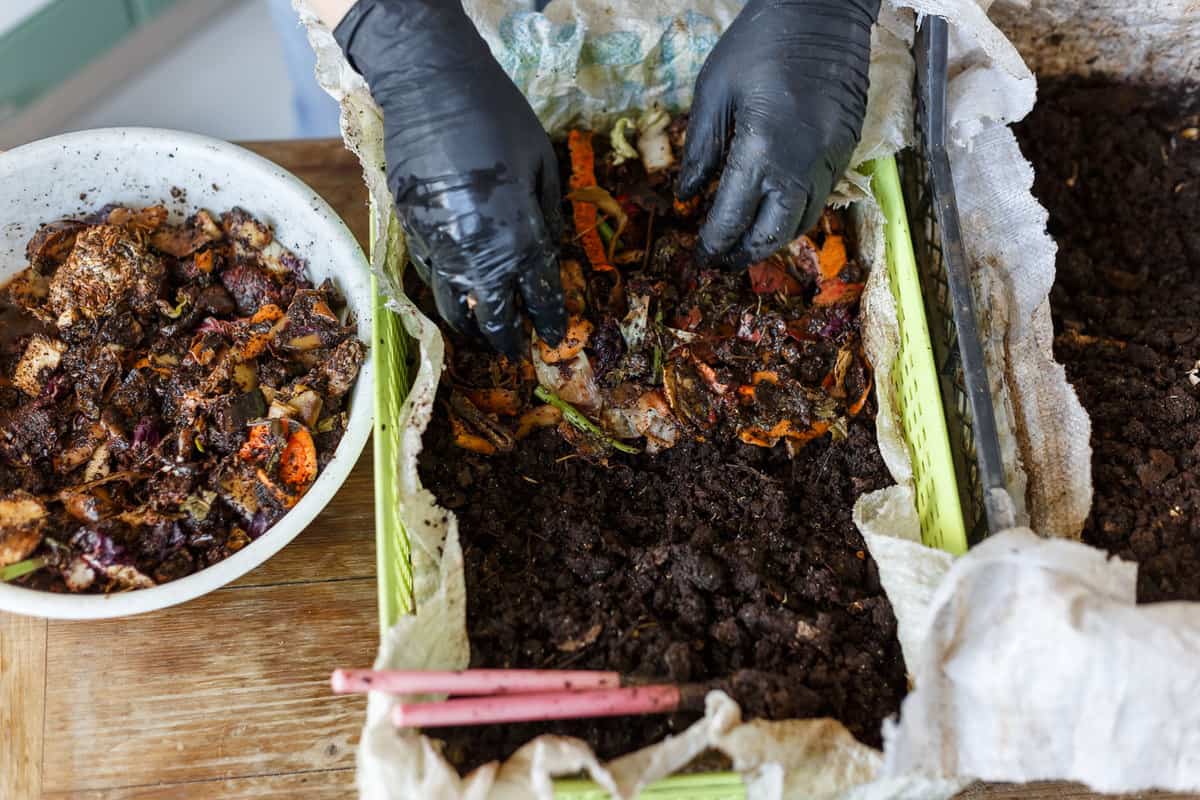Compost provides many benefits for your plants and garden, including increasing the health of your soil and providing nutrients to plants. You can make your own compost at home or buy ready-made compost at most lawn and garden centers. But should you just add compost on top of existing soil? We’ve done the research to answer this question.
One of the most common ways to use compost is to spread or sprinkle it directly on top of the soil. This is done in order to amend soil health or prevent weed growth. But you can add compost to the soil in other ways as well, including:
- Mixing it into the existing soil
- Blending it with potting soil
- Raking it under trees and shrubs
The best method to use just depends on how you want to use the compost. In this article, we’ll discuss these methods in more detail. We’ll also discuss when you should use each one and how to use compost effectively so that you can reap all of its benefits. Please continue reading to learn more.

What Does Healthy Compost Look Like?
Before we discuss how to use compost, it’s important to first explain what finished compost looks like, especially if you make your own at home. Finished compost should have no traces of original materials in it. Instead, it will be dark and crumbly and look very similar to the topsoil in your garden. It should also smell like earth and not have a sour smell to it.
This information is important because if your compost isn’t fully mature and healthy, it can negatively affect your soil and plants. For example, traces of food scraps can attract pests that can damage your plants.
It’s also important that you only use natural and organic materials in your compost. Materials that contain harmful chemicals can affect the delicate balance of your soil and the organisms that live there. Don’t try to compost things like plastic either, because you’ll find that they don’t decompose very well.

What Comes First, Topsoil or Compost?
Once you’re sure that your compost is finished, you can now use it. But how do you use it correctly? Should you add topsoil first and then compost, or can you just add compost directly on top of the soil?
The general rule is that you can add compost directly on top of the existing soil. Since finished compost should look almost indistinguishable from topsoil, you may not even be able to tell the difference once you’ve added it.
But once you’ve applied compost on top of the soil, what you do with it at that point just depends on how you want to use it. For example, sometimes, you will just want to add the compost and leave it alone. Other times you will want to mix it into the soil for best results. Here are the different ways for how you can use compost.
You may also like: 6 Types Of Compost You Should Know
How to Add Compost to Your Soil

There are four main ways to add compost to your soil. In addition to simply spreading it on top of the soil, you can also mix it into the soil, blend it with potting soil, or rake it underneath trees and shrubs. Ultimately, the correct method just depends on what you’re trying to do. Let’s learn when and how to do each one.
Spread It On Top of Soil
The easiest way to use compost is to spread or sprinkle it on top of your soil. You will want to do this when either amending your existing soil or preventing weed growth around flowers and vegetables.
Amending Existing Soil
For various reasons, your soil may not always be as healthy as it should be. The nutrients found in compost can help to remedy the situation. If your topsoil is compacted, you will want to use a rake or cultivator to first loosen it up.
But if it is already loose, sprinkle a 1-inch layer on top of the soil and then use your hands to work it into the top 3 inches of soil. Over time the compost will increase soil health by adding the missing nutrients.
Preventing Weeds
Compost can also be used to prevent weeds in the same way that you would use mulch. To use it, spread a 1-2 inch layer of compost around flower beds in early spring. The compost will help to keep weeds from establishing. You can also add a 1-inch layer of compost in fall to prepare plants during winter. The compost will both prevent moisture loss and protect plants from freezing.
Mix It into Existing Soil

When establishing new plants or a new lawn for the first time, you will want to mix the compost into the soil. This will encourage healthy plant growth. If growing vegetables, compost will also help to increase yield.
For existing vegetable beds, add several inches of compost on top of the soil during fall. Then till the compost into the soil when you start your new garden in spring. When you add your vegetables, add a little bit of compost into the hole as well.
Whether you're trying to establish grass in bald areas or install a completely new lawn, compost can help with that also. For best results, add about 3 inches of compost on top of the existing soil. Then, till about 5 inches of soil and add your grass seed.
Blend It With Potting Soil
Compost can be used with potted plants also, regardless of whether the plants are outdoors or indoors. Even high-quality potting soil can lose nutrients over time, but compost can help replenish those nutrients.
There are two ways you can add compost to potted plants and window boxes. First, you can add compost directly to the potting soil before use, then blend it together. Second, you can help maintain nutrients by adding 1 inch of compost to your potted plants two times a year.
Rake It Under Trees and Shrubs
The last method for using compost is to rake it underneath your trees and shrubs, similar to using mulch. Doing so can help the soil around the tree retain moisture, keep the soil cool, and prevent weed growth.
To do this, add a ½ to 1-inch layer of compost around the tree's trunk, then rake it outward to the edge of the tree canopy. Just be sure not to place compost so that it is directly in contact with the trunk. This can cause wood rot or harbor disease and pests, which can kill your tree.
Can You Put Compost On Top of Mulch?

In most cases, it is best to add compost directly on top of the soil in order for the compost to work the best. Then, you should add mulch on top of the compost. This is especially true when adding mulch for the first time.
However, if you already have mulch in your garden, you can add compost on top if the mulch is ½ inch thick or less. You could then add a 1-inch layer of compost, then add a new layer of mulch on top of the compost.
How Much Compost Should You Add to the Soil?
According to McGill Environmental Systems, the general rule of thumb is to add about ½ inch of compost to the top of the soil unless you're amending the soil. If you’re amending the soil, you should add a 1- to 2-inch layer in order to have the best results.
Can Too Much Compost Hurt Plants?
When using compost, it is important that you don’t add more than 1 to 2 inches. Using too much compost can actually smother plants. This is especially true if you make your own compost and the compost hasn’t fully matured yet. Remember that compost that isn’t fully matured can bring unwanted pests to your garden and inadvertently cause damage to plants that way.
See more: Can Compost Kill Plants?
Can You Plant Directly Into Compost?
Although compost provides many benefits for soil and plant health, planting directly into compost is not a good idea. The reason is that compost does not have the same drainage level as regular topsoil, so compost may not regulate moisture in the same way, which could result in root rot.
Compost may also lack some nutrients and organisms found in topsoil that help maintain healthy plant growth. It is better used as an additive or amendment to the existing soil rather than as soil itself. Following the recommended amount of no more than 2 inches of compost in your soil will help keep your plants their healthiest.
In Closing
![Shredded vegetable and other elements inside a small compost bin, How To Compost In Florida [A Complete Guide]](https://gardentabs.com/wp-content/uploads/2021/08/Shredded-vegetable-and-other-elements-inside-a-small-compost-bin.jpg)
Compost provides many benefits for plants and soil, but the key is using it correctly. You can add it directly on top of the soil. But in some cases, it is better to mix it into the soil, especially when establishing new plants. Thanks for reading!
